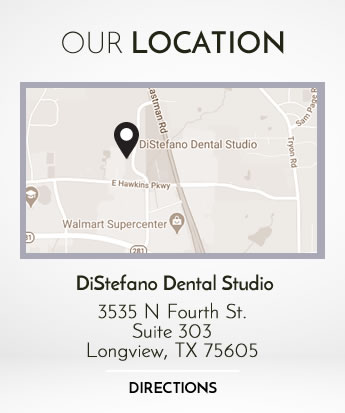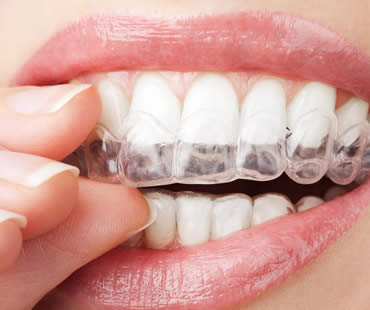
Having straight teeth is a goal from young people through mature adults, and achieving a great smile without having to wear braces is a wonderful benefit. Awkward moments of a mouth full of metal, food particles stuck in your smile, and painful wires poking your cheeks are all erased. How do you make this happen? The answer is Invisalign.
Invisalign is an orthodontic solution that involves wearing a series of clear plastic aligners that fit right onto your teeth, and move them using slow pressure. They are nearly invisible and can be removed at any time, allowing you to follow your usual eating and hygiene routines.
The first step is taking impressions of your teeth and making a digital 3-D image so that an exact treatment plan can be created. You will be able to see how your teeth should look at each treatment stage. Your customized aligners will be made in a lab so that they fit comfortably yet do their job.
You will need to wear your aligners during the day and while you sleep, but remove them for eating and hygiene. You can even remove them for special occasions, as long as you strive to wear the aligners 22 hours each day. Roughly every two weeks, you will change to a new set of aligners that will advance you to the next stage of treatment. You will see your dentist about every six weeks for checkups.
Invisalign treatment lasts about a year for adults and about two years for teens. Your progress will be visible throughout treatment, motivating you to continue wearing them to transform your smile. Once your treatment is complete, you’ll have beautiful straight teeth and very few complaints about your orthodontic experience.
Our dental office is located in Longview

Pain, sensitivity, and trouble eating or sleeping are only a few of the uncomfortable symptoms of a damaged tooth. Sometimes the inside portion of a tooth, or its pulp, becomes so damaged that action must be taken. It could come in the form of extracting the tooth or it might be able to be saved through root canal treatment.
Virtually every dentist recommends root canal therapy over tooth extraction. It’s almost always better to save your natural tooth. Otherwise, you’ll end up with a hole in your smile and the problems that accompany it.
A tooth can be damaged for a variety of reasons such as severe decay, trauma, or deep cavities. The damaged pulp contains nerves, which is one reason that many patients experience severe pain. Although dental fillings can remedy some cavities or decay, when the situation advances to the extent of harming the tooth pulp, fillings are not enough. Root canal treatment is usually the best way to repair the tooth without having to pull it.
A root canal procedure involves drilling into the tooth so that the pulp can be completely removed and the canal thoroughly cleaned. Then the area is filled with special material and sealed to prevent future damage. Often, a dental crown is placed on top of the restored tooth to provide added protection. This process alleviates any symptoms and give you back your fully functional, natural tooth.
If you were to opt for tooth extraction instead of root canal treatment, you’d be choosing a more invasive approach. The procedure can be intrusive, time consuming and costly. Recovery from tooth extraction can be uncomfortable and take longer than root canal therapy. Careful oral hygiene is necessary after extraction to avoid infection or complications. You’ll also be left with an unappealing hole in your smile that can make eating and speaking more difficult, and your other teeth will likely start moving into that empty space.
To determine the best treatment for you, consult a reputable dentist. You’ll learn about the options and how root canal therapy may be the best choice in restoring your oral health and your smile.
If you live in the Longview area contact us today
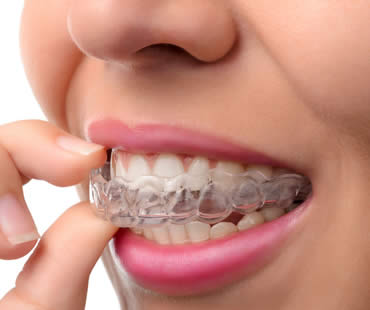
Metal braces used to go hand-in-hand with teenage years. Those awkward years were made so much worse with the taunts of “metal mouth” or “brace face.” Today, if your teen is dreading those comments, there are alternatives, particularly Invisalign.
Has your teen been told that braces are a necessity? Is he or she fearful of time spent in metal braces? Invisalign could be the solution, providing an “invisible” way to straighten and align crooked teeth.
Not all teens are suited for treatment with Invisalign. The aligners must be worn diligently, up to 22 hours a day, in order to work properly. Teens may be tempted to remove them more often than recommended, leading to far longer treatment time or ineffectual treatment.
Changes in Invisalign treatment are addressing the specific needs of teens with solutions like the blue dot wear indicator, which allows dentists and parents to determine if the teen is wearing the aligner the recommended amount of time.
Power ridges provide the maximum force necessary to exact complex movements in the mouth, including the movement of tooth roots. Because some teens are still in the process of having their teeth erupt, Invisalign aligners can feature eruption tabs or other design elements for teeth that are still in the process of erupting.
Benefits like these allow Invisalign to cater to a teen’s specific orthodontic needs while still providing all of the things that make Invisalign aligners so popular with patients of all ages.
Invisalign makes it possible to remove the plastic aligners while teens are eating or cleaning their teeth. Metal braces can trap unsightly bits of food, leading to a teen being self-conscious. Oral hygiene habits remain far easier with Invisalign than with traditional metal braces. Flossing takes place normally, while flossing with traditional metal braces is very challenging.
If you have questions regarding whether or not Invisalign or traditional metal braces are right for your individual teen, talk to a skilled orthodontist today. Your orthodontist will determine if Invisalign will be the most effective treatment to address your teen’s orthodontic needs.
Schedule your appointment at our Longview dental office

Sometimes a tooth is so severely damaged that the only way to save it is with root canal treatment. There is no reason to turn and run if your dentist advises this procedure. The treatment has advanced to the point that it’s often compared to getting a filling. There are certain steps that will be performed as part of nearly every root canal procedure.
Preparation
X-rays may be taken as part of the diagnosis process or to determine the extent of damage. Once the dentist is ready to begin treatment, a local anesthetic will be used to numb the area throughout the procedure.
Pulp removal
A rubber dam will be placed around the tooth to separate the area from the rest of the mouth, and to keep it dry from saliva. The tooth will be opened, often using a small dental drill, to gain access to the pulp inside the tooth. The damaged pulp will be removed, and if there is an abscess it will be drained.
Cleaning and filling
After the pulp is eliminated, the dentist will thoroughly clean the area. The root canal will be widened if needed to create an adequate space for the filling. Depending on the extent of the damage, this step of the process can take up to several hours to complete or it can be spread over more than one visit. A temporary filling is sometimes used to seal the area between visits. If infection is present, the dentist may prescribe antibiotics.
Sealing
The temporary filling will be removed and the permanent filling placed to fully seal the tooth and prevent future infection. If the tooth has been filled at the root, the risk of breaking is higher so a crown may be recommended for protection.
Crown placement
Crowns help prevent further damage or fracturing. If needed, the tooth will be reduced somewhat to allow space for the crown. It will be held in place securely with dental cement.
Recovery
After root canal treatment, the tooth should survive for many years. The procedure may be repeated if re-infection occurs.
Schedule your appointment at our Longview dental office
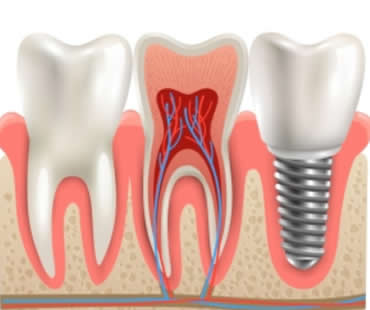
Dental implants are used to replace individual or missing teeth or to anchor loose dentures. For many patients with these issues, traditional dental implants may not a viable option. For example, a patient who does not possess adequate bone levels to anchor the implants would not be a good candidate for traditional dental implants. With mini dental implants, the bone required to anchor the implant successfully is much less.
Thanks to advances in implant dentistry, these patients have other options. Mini dental implants have emerged as an attractive choice for cases that are not conducive to the placement of traditional implants. For the patient who has inadequate bone, the bone required to successfully anchor mini dental implants is much less. Unlike traditional implants, the placement procedure for mini dental implants is a minimally invasive procedure that can be completed in one appointment by a specially trained general or family dentist. Because the procedure is less involved, the pain and length of recovery is greatly diminished.
Patients who have existing health conditions that would preclude them from more invasive surgery may find mini dental implants an extremely appealing option. Mini implants are also a perfect choice for restoring one missing or damaged tooth. Should implant failure occur, grafting procedures would not be necessary because of the small size with mini dental implants.
Most importantly, mini dental implants maintain the look, feel and function of your natural teeth. While you have to wait months for traditional implants to fuse with the bone, mini dental implants are ready for immediate use. Talk to your dentist to determine if mini dental implants would be a good option for your dental restorations and get ready to face the world with a confident new smile.
We treat patients from Longview and the surrounding area
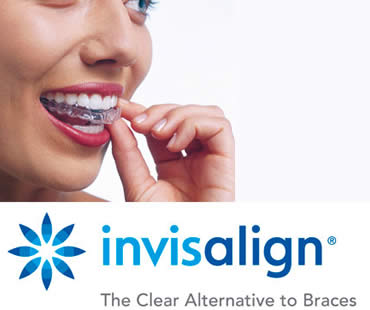
A new way to straighten teeth has been introduced with Invisalign clear braces. As you wear the invisible plastic aligners, your teeth are gently shifted into better positions and you avoid many of the hassles associated with traditional braces.
Treatment begins with a consultation with a professional who has been trained and recognized to provide Invisalign braces. A thorough analysis of your teeth and jaw, as well as your smile goals, will be done to determine if Invisalign is right for you. If so, a treatment plan will be customized just for you after X-rays and impressions of your mouth are taken. The process also uses 3D images to create a computer simulation of your treatment.
Using the exact measurements taken of your mouth, a set of aligners will be made from clear plastic. Invisalign treatment advances in stages, with a different set of aligners worn every two weeks. They should be worn consistently for about twenty hours daily, but are removable for eating and cleaning. Maintenance is simple because the aligners can be gently brushed along with your normal brushing routine.
There are no restrictions about foods to avoid when undergoing Invisalign treatment, since the aligners are removed while eating. You also don’t have to worry about food getting stuck in the braces like with metal braces, and because food doesn’t contact the aligners there are no worries about stains. Invisalign braces can be worn while playing instruments or sports, although they should not be considered a substitute for a protective mouth guard.
Visits to the orthodontist are usually required every six months or so to monitor treatment and ensure ideal results. The amount of time it takes to achieve your smile goals depends on each patient and how consistently the aligners are worn, but treatment often lasts about a year.
If you live in the Longview area contact us today








